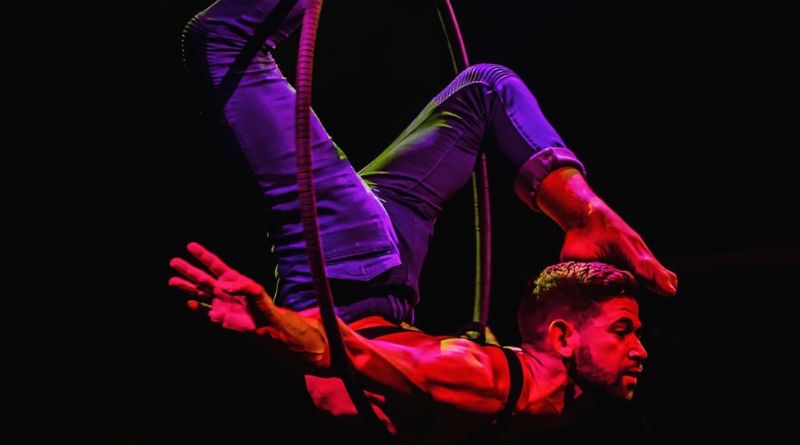Aerial acrobatics is an exhilarating and visually stunning performance art that combines strength, flexibility, and grace to create gravity-defying feats. It’s a discipline that has captivated audiences for centuries, evolving from circus acts to mainstream performances in theaters, festivals, and live shows. Whether performed on a trapeze, aerial silks, or hoop, aerial acrobatics has become a symbol of both athleticism and artistry.
In this article, we will explore the history, techniques, benefits, and safety aspects of aerial acrobatics, along with answers to some frequently asked questions.
Table of Contents
The History of Aerial Acrobatics
Aerial acrobatics has a long and storied history, dating back to ancient times. The concept of performing tricks while suspended in the air has roots in various cultural traditions, from the Chinese acrobatics of the Tang Dynasty to the aerial feats seen in European circuses in the 18th and 19th centuries.
The modern era of aerial acrobatics, particularly as we know it today, began to take shape during the 19th century, when trapeze artists became a major attraction in circuses. The invention of aerial silks and hoop acts (such as the lyra) further expanded the art form, leading to a rise in popularity, especially in contemporary circus and theater performances.
Techniques and Disciplines of Aerial Acrobatics
Aerial acrobatics encompasses several disciplines, each requiring specific skills, equipment, and techniques. Some of the most popular forms of aerial performance include:
1. Trapeze
- Static Trapeze: A fixed bar suspended from the ceiling, on which acrobats perform various poses, spins, and drops.
- Flying Trapeze: Involves one trapeze artist flying through the air and being caught by another performer or swinging in mid-air. This variation is one of the most dramatic forms of aerial acrobatics.
2. Aerial Silks
Aerial silks involve performers using long pieces of fabric suspended from the ceiling. The artist wraps, climbs, and creates elaborate poses and drops while gracefully maneuvering the silks. It’s one of the most visually striking forms, often combining strength, flexibility, and fluidity.
3. Aerial Hoop (Lyra)
The lyra, also known as the aerial hoop, is a circular metal frame suspended from the ceiling. Performers use it as a platform for spinning, inverting, and performing a series of acrobatic moves. It’s a blend of dance, gymnastics, and aerial skills.
4. Aerial Straps
Aerial straps are similar to silks, but rather than using fabric, acrobats perform their feats using two strong straps. This requires immense upper body strength and control, as the performer is often suspended by only their hands or feet.
5. Pole Aerials
In this discipline, artists perform acrobatic moves on a vertical pole, often combining elements of pole dancing, gymnastics, and aerial artistry. This discipline requires a strong core and upper body strength, with an emphasis on fluidity and creativity.
Each of these disciplines demands years of practice to master the complex moves, balance, and timing required to perform safely and spectacularly. Training involves building strength, flexibility, coordination, and mental focus.
The Benefits of Aerial Acrobatics
Aerial acrobatics offers numerous benefits, not only for the performers but also for those who take it up as a form of fitness. Some of the most significant benefits include:
- Improved Strength: Aerial acrobatics is a full-body workout that targets the arms, core, legs, and back. It helps build muscle strength and endurance.
- Increased Flexibility: The various stretches and contortions performed on the aerial apparatus help increase flexibility, particularly in the shoulders, spine, and hamstrings.
- Boosted Confidence: Successfully mastering a difficult move or routine can be a huge confidence booster. Performing in front of an audience further strengthens self-assurance.
- Enhanced Coordination: Aerial acrobatics demands excellent coordination and body awareness, both of which are developed over time through practice.
- Mental Health Benefits: As with other forms of exercise, aerial acrobatics promotes the release of endorphins, leading to a positive mood and reduced stress.
Safety Considerations in Aerial Acrobatics
While aerial acrobatics is breathtaking to watch, it’s important to remember that it requires a high level of skill and safety precautions. The risk of injury is present, especially when performing high drops or complicated moves. However, with the right training, supervision, and safety measures, these risks can be minimized.
Here are some key safety considerations for aerial acrobatics:
- Proper Training: Beginners should always train under the supervision of a qualified instructor. Attempting advanced moves without proper training can lead to serious injury.
- Equipment Checks: Regular inspections of the aerial apparatus are crucial to ensure that everything is securely fastened and in good condition.
- Warm-up and Stretching: Before engaging in aerial practice, it’s important to warm up and stretch to prevent muscle strains and injuries.
- Spotting and Safety Mats: For beginners or when attempting difficult drops, having a spotter and safety mats in place can reduce the risk of injury.
- Physical Preparation: Aerial acrobatics requires significant strength, flexibility, and cardiovascular fitness. It’s important to build up these physical capabilities gradually.
Frequently Asked Questions (FAQs)
1. What age can I start learning aerial acrobatics?
Most schools recommend starting aerial acrobatics at around age 8 or older, depending on the child’s physical development and strength. However, there’s no upper age limit. Many adults take up aerial arts as a form of fitness and performance.
2. Is aerial acrobatics dangerous?
Like any form of high-risk physical activity, aerial acrobatics does carry some inherent risks. However, with proper training, equipment, and safety precautions, the risks are minimized.
3. Do I need to be super strong to do aerial acrobatics?
While strength is important, flexibility and technique are equally important in aerial arts. Beginners start by building their strength and conditioning gradually. Over time, you’ll develop the necessary strength and control.
4. How long does it take to get good at aerial acrobatics?
Progress in aerial acrobatics depends on the discipline, your fitness level, and the time you dedicate to practice. On average, it takes several months to a few years to become proficient, but consistency and dedication will lead to improvement.
5. Can I practice aerial acrobatics at home?
It’s possible to practice some aerial techniques at home, but it’s important to have proper equipment and enough space. Aerial silks or a hoop can be installed with care, but it’s always recommended to practice under the guidance of a professional to ensure safety.
6. What’s the best aerial apparatus for beginners?
Aerial silks or a static trapeze are often recommended for beginners, as they offer a range of moves that can be scaled to suit different skill levels. Aerial hoop is also a popular choice for those who enjoy working with a defined piece of equipment.
Conclusion
Aerial acrobatics is a dynamic and thrilling art form that blends physical skill with artistic expression. From the graceful movements on aerial silks to the daring drops on the trapeze, aerial acrobatics has something to offer everyone—from fitness enthusiasts to aspiring performers. As with any physical activity, safety, patience, and practice are key to mastering this extraordinary discipline. Whether you’re performing for an audience or enjoying it as a hobby, aerial acrobatics will continue to inspire awe and admiration with every breathtaking move.



